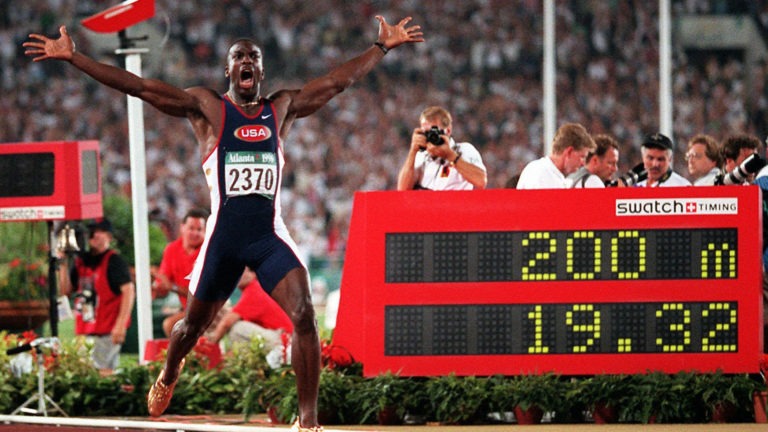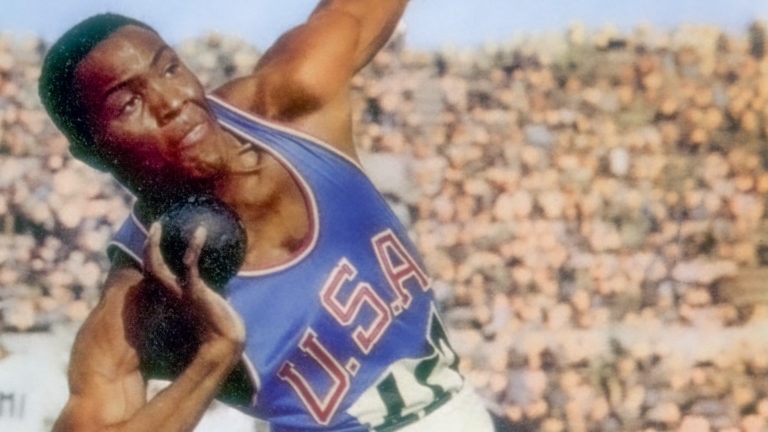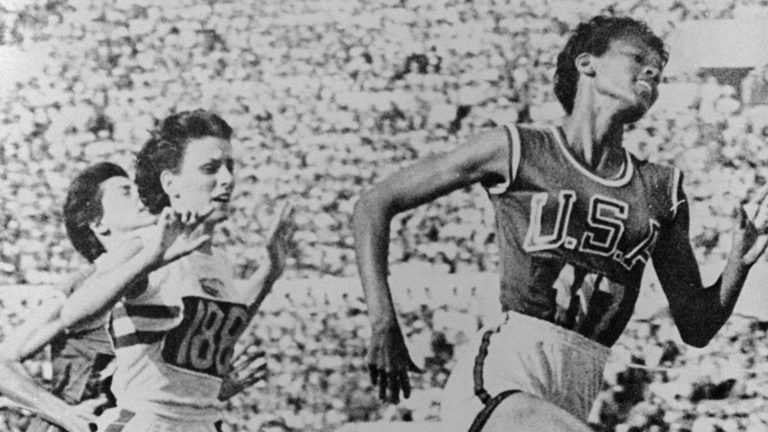
Michael Johnson
Michael Johnson was one of the world’s best sprinters of his time, capturing four Olympic gold medals over three Olympic Games and maintaining his speed even as he aged.

The oldest form of organized sport is track and field athletics, comprised of as many as 25 distinct events. While the sport was established by the late 1800s in many countries, it wasn’t until the Olympic Games were revived in 1896 that interest in athletics spread worldwide. The sport was contested at the 1896 Summer Olympics in Athens as a men’s only event. Women’s track and field event’s debuted at the 1928 Amsterdam Games.
Men’s track events include the 100-, 200-, 400-, 800-, 1,500-, 5,000-, and 10,000-metre runs; the 3,000-metre steeplechase; the 110- and 400-metre hurdles; and the 400- and 1,500-metre relays. Field events include the high jump, pole vault, long jump, triple jump, shot put, discus throw, hammer throw and javelin throw. The decathlon combines 10 track and field events. The only difference in women’s track and field is a 100-metre hurdles event rather than 110-metres. And women compete in a heptathlon, which includes seven events, rather than 10.
Track and field champions from the United States include Eddie Tolan, Jesse Owens and Carl Lewis in the 100-metre sprint, Wilma Rudolph in all three sprints and Florence Griffith Joyner in the 100- and 200-metres. Lee Evans and Michael Johnson set world records in the 400-metres. Harrison Dillard, Glenn Davis and Edwin Moses were standout in hurdles, while Al Oerter is legendary in the discus throw and Jesse Owens and Bob Beamon in the long jump event.
Para track and field events have been contested at every Summer Paralympics since the first games in 1960. The United States dominated para track and field events from 1964 to 1996.

Michael Johnson was one of the world’s best sprinters of his time, capturing four Olympic gold medals over three Olympic Games and maintaining his speed even as he aged.

Milt Campbell’s first-ever decathlon was at the 1952 U.S. Olympic Trials. He went on to win silver at the Helsinki 1952 Olympic Games. Campbell won gold at the Melbourne 1956 Olympic Games.

After quitting his college football team, Parry O’Brien became the most dominant shotputter of his time, winning 116 consecutive meets, including two Olympic gold medals.

Rafer Johnson started on the UCLA basketball team and was drafted by the NFL’s Los Angeles Rams. He took silver in the decathlon at the Melbourne 1956 Olympic Games and won gold at the Rome 1960 Olympic Games.

Relatively unknown until a tuneup meet prior to the Rome 1960 Olympic Games, long jumper Ralph Boston broke Jesse Owens’ long-standing world record and went on to win Olympic gold.

After losing use of his legs in a farming accident, Randy Snow once again became an elite athlete, winning two Paralympic gold medals and one bronze.

Ray Ewry was orphaned and contracted polio as a youngster, but worked hard to develop into a world-class athlete and won eight gold medals over three Olympic Games.

Roger Kingdom won gold at the Los Angeles 1984 and Seoul 1988 Games, becoming the second man to win back-to-back Olympic titles in the 110m hurdles.

Susan Hagel, a six-time Paralympian, competed in wheelchair basketball, Para archery, and Para track and field between 1976 and 1996, earning four gold and two bronze medals.

Tommie Smith’s courage to protest for racial equality continues to be remembered throughout the sports landscape.

Willie Davenport ran the 100-meter hurdles in four Summer Games and won one gold medal. At the Lake Placid 1980 Olympic Winter Games, he was part of the U.S. four-man bobsled team.

The first American woman to compete in five Olympic Games, Willye White won silver in long jump at the Melbourne 1956 Olympic Games and the 4×100-meter relay at the Tokyo 1964 Olympic Games.

Despite being told she would never walk again, Wilma Rudolph won three track and field gold medals at the Rome 1960 Olympic Games.

Wyomia Tyus won the 100-meter dash gold medal at the Tokyo 1964 Olympic Games. Four years later in Mexico City, she became the first person to repeat as Olympic gold medalist in the 100.